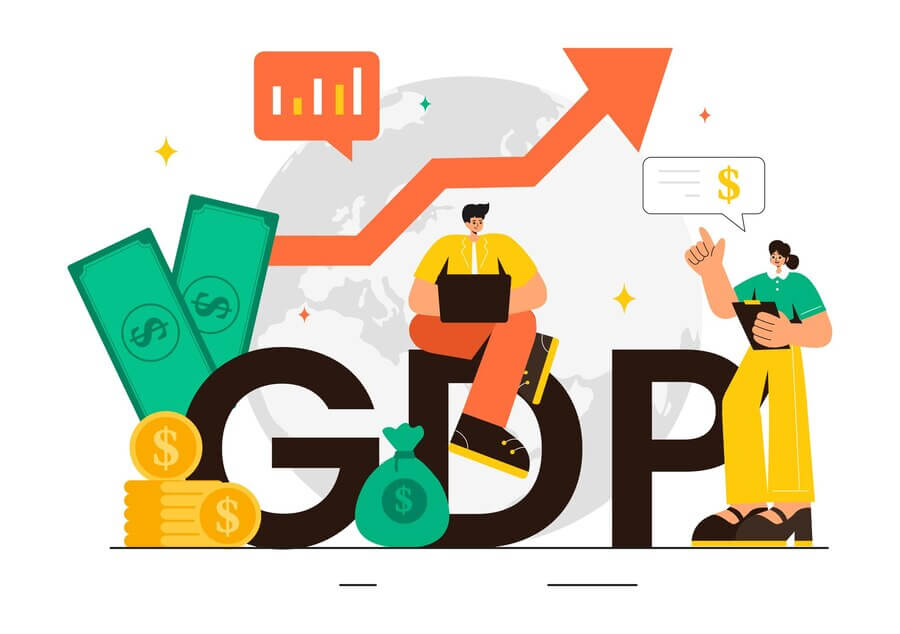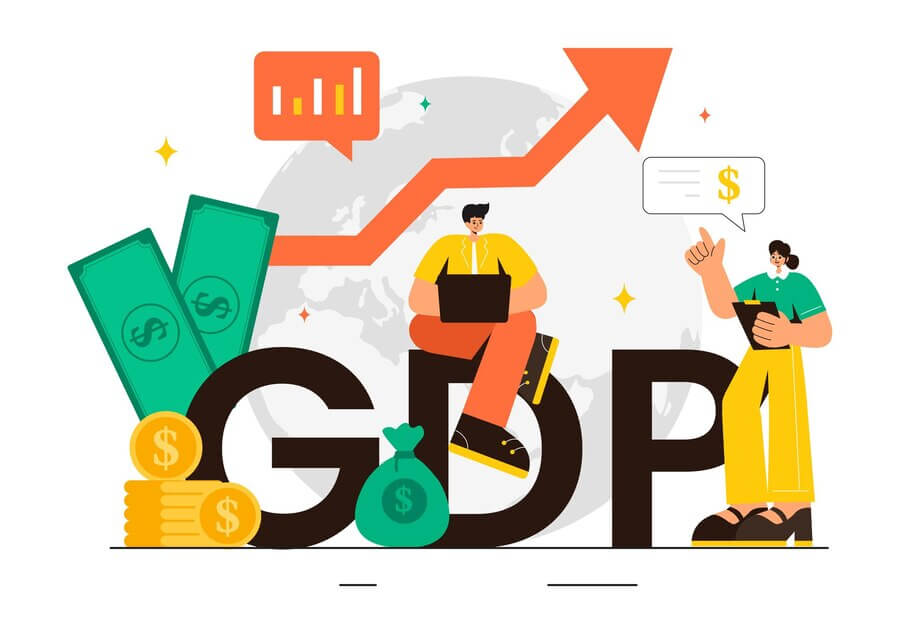Reflecting a downturn in economic activity, India’s GDP (GDP) fell to a two-year low of 5.4% in the second quarter (Q2) of the financial year 2024-25. Released by the Ministry of Statistics and Program Implementation, the alarming numbers have sparked questions over the economic direction of the nation and are under pressure on the Reserve Bank of India (RBI) to take monetary easing into account in order to resuscitate growth.
The slowing down raises concerns on the sustainability of India’s economic recovery following the epidemic in view of a difficult global economic environment, high inflation, and poor domestic demand.
The Reasons behind the Slowness
Several elements led to India’s GDP growth’s notable slowing down in Q2:
- Reduced Domestic Demand
Crucially driving India’s GDP economy, domestic spending exhibited indications of slowing in Q2. Demand suffered greatly from rising prices, more borrowing expenses brought on by increasing interest rates, and household discretionary expenditure declining. While urban consumption stayed mostly constant, rural demand—which makes up a sizable portion of the economy—faced difficulties because of unpredictable monsoons and flat rural earnings. - Sluggish Industrial Development
Particularly in manufacturing, which has been struggling with high input prices and reduced demand, the industrial sector recorded slower development. The quarter’s Index of Industrial Production (IIP) showed declines in a number of important industries, including electronics and textiles. - Worldwide Obstacles
India’s export industry suffered from a slowing down in world commerce and geopolitical uncertainty, especially resulting from conflicts and tightening monetary policies in big nations. In Q2, exports of products and services dropped by 4% year-on-year, a notable drop from the strong increase in past quarters. - Improved Rates of Interest
Tighter liquidity circumstances follow from the RBI’s relentless concentration on lowing inflation by high interest rates. Although inflation is declining, borrowing still costs a lot for companies and consumers, which discourages big projects and investments.
Effect on Important Industries
Agriculture: Unbalanced monsoon season rainfall caused slow down in agricultural development in Q2 Although kharif crop yield demonstrated resiliency, the delay in monsoons in important areas changed planting patterns, hence lowering output and decreasing rural income levels.
Businesses
Major contributor to India’s GDP, the services industry shown conflicting performance. Although financial services and IT performed strongly, sluggish consumer mood caused hotel and real estate to see slower expansion. The total services expansion was insufficient to counterbalance the fall in other sectors.
Industries
One of the worst-hit industries was manufacturing; growth dropped sharply to 1.9% from 5.3% in the previous quarter. Rising raw material prices combined with a slowing down in both domestic and worldwide demand helped to explain the fall.
RBI Under Pressure to Act
The RBI is under more and more pressure nowadays to act to boost economic development. The following are some main factors the central bank should give top priority:
- Cutting Interest Rates
There is growing demand for the RBI to lower the repo rate as GDP growth slows and inflation shows indications of easing. A rate reduction would enable families and companies to pay less borrowing, therefore promoting investment and consumption. - Liquidity Enhancement
The RBI might think about adding liquidity to the banking system to guarantee enough credit flow to important sectors including industry, MSMEs, and agriculture. - Aimed Actions
Simply monetary easing might not be enough. To increase economic activity the RBI could work with the government on focused fiscal policies such incentives for infrastructure development or subsidies for particular sectors.
Government’s Part in Reversing Decline
Although the RBI’s monetary policy is very significant, government fiscal actions will also be equally vital in helping to solve the crisis. Important areas for work consist in:
Increasing expenditure on rural welfare projects like MGNREGA as well as offering fertilizers and seed subsidies will help to stimulate rural consumption.
Expanding trade agreements and export incentives could assist to offset the effect of low world demand.
Accelerating infrastructure projects would help to boost industry and generate employment.
Global Context and Problems
India’s slow down coincides with other developing nations also struggling with reduced rates of growth. China’s GDP for the same quarter was 4.9%; the US economy is showing uneven recovery. But India’s reliance on domestic consumption makes it especially susceptible to internal problems such inflation and rural misery.
Outlook for the Quarters to Come
Given proper policies, economists are cautiously hopeful that GDP growth will pick up in the next quarters:
Control of Inflation: Consumer expenditure could gradually rebound as inflation stays somewhat mild.
Should the RBI choose to lower rates during its next monetary policy meeting, Q4 will see the beginning of the gains flowing into the economy.
Global revival: Any indicators of stabilization in geopolitics or revival in world trade might give exporters much-needed impetus.
At last
Policymakers should be awakened by the Q2 slowdown to a two-year low of 5.4% to give measures that boost demand top priority and handle structural issues top importance. A concerted approach including fiscal stimulus, infrastructure investment, and reforms in important industries would be crucial to rebuild momentum even as the RBI faces increasing pressure to lower rates.
Though urgent actions are required to negotiate the current slowdown and guarantee sustained economic improvement in the next quarters, India’s long-term growth story is still intact.

If you are interested for more: India’s GDP fell to a two-year low of 5.4% in the Q2 of the financial year 2024-25. electric vehicle EV well known in India Mahindra and Tata

